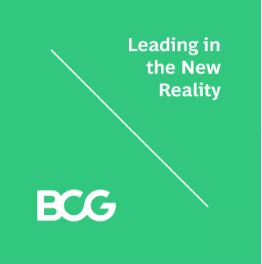Weekly Brief: Busting Today’s Five Biggest Inflation Myths

To BCG’s network around the world,
Like many of you, I’ve started to worry about inflation in the US recently—particularly because of the new $1.9 trillion COVID-19 relief and stimulus package in this country and lots of talk of inflation in the news. And when I have questions and concerns about the economy, I usually turn to Philipp Carlsson-Szlezak, BCG’s chief economist, to get his take.
Philipp’s Harvard Business Review video from a year ago, which envisioned potential economic scenarios as a result of the pandemic, was HBR’s most-viewed in 2020. He always has a clear point of view, grounded in historic reality—the “one-handed economist” that Harry Truman always wanted.*
When I asked Philipp about inflation, he told me that he believes the doomsday headlines are overblown, despite the strong stimulus, higher inflation expectations, and the recent rise in rates. In an excellent new video, Philipp explains how low and stable inflation are at the heart of a healthy macroeconomic regime with high valuations—and debunks these five common myths:
- Inflation is already rising. Yes, but this is a mechanical effect of a weak base period, when the economy was in free fall last April and May. The one-, three-, and six-month windows of inflation since then have all included spikes that then came back down. We’ll soon hit the one-year mark since last spring’s weak base, and we expect to see the same pattern in our year-over-year inflation measure: a spike and then a leveling off.
- If my input prices go up, so must consumer prices. Commodity prices have moved significantly higher, leading many CFOs to link this to consumer price inflation. But producer price inflation across the stages of the economy’s value chain show that such pressures are gradually absorbed in the margins or offset by higher productivity growth. Typically, only a small part of producer price inflation reaches price tags on supermarket shelves.
- Printing money leads to higher inflation. There is a connection between money and prices, but money supply growth is a poor guide for realized inflation. The data since the 1960s doesn’t show a clear correlation—not even after 2008, when money growth accelerated and many predicted high inflation. New money doesn’t automatically translate to new spending, and new spending doesn’t mean the economy is capacity-constrained.
- A strong economy delivers inflation—and then recession. In the modern era, inflation doesn’t respond readily to cyclical pressures because of disinflationary global value chains in the goods sector, disinflationary digital business models in services, and the power of a well-anchored regime. While this doesn’t guarantee long-term low inflation, it does make high inflation unlikely.
- We are on the path to 1970s-style inflation. This is the most serious misreading of inflationary dynamics. An anchored inflationary regime can break, but it’s an improbable shift and would happen over time. In the 1960s, the last time a good inflation regime crumbled, we saw sustained, not one-off, fiscal stimulus and monetary errors—all when the economy was already overheated.
Stimulus and vaccines are thankfully delivering a stronger-than-expected recovery, shifting growth expectations—and therefore inflation expectations—higher. There’s little evidence that we need to worry about a regime shift in inflation anytime soon.
Please see below to read more on related topics.
Until next week,
 |
Rich Lesser
Chief Executive Officer
*Harry Truman famously said, “Give me a one-handed economist! All my economists say, ‘On the one hand… [and then] on the other.’”
| Debunking Five Inflation Myths In this video, BCG’s chief economist Philipp Carlsson-Szezlak explains the importance of low and stable inflation—and why he thinks today’s inflation fears are greatly exaggerated. CLICK TO WATCH Preparing for the Next Macroeconomic Cycle—and Its Risks Leaders need to start thinking beyond 2021.Understanding the Economic Shock of CoronavirusHow bad will it get, and what could recovery look like? |






